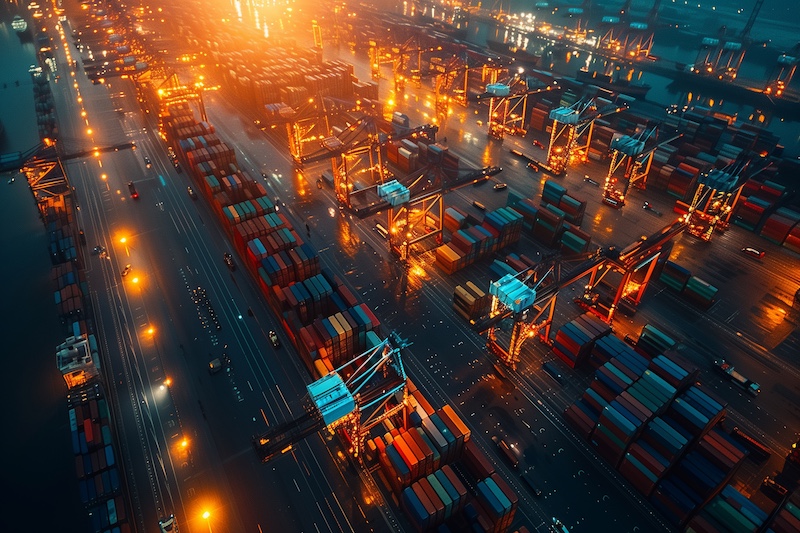As we come to the end of 2024, RFIDJournal writers and experts who contributed their knowledge are taking both a look back at this year and what is ahead in 2025. This entry is from William Wappler, executive chairman and CEO, Surgere
The supply chain industry continues to evolve rapidly, shaped by emerging trends that demand attention in 2024. From the transformative potential of artificial intelligence (AI) and data-driven solutions to the growing focus on transparency and sustainability, these trends are setting the stage for what’s to come.
Below, we explore how these trends will impact supply chain management in the year ahead.
Emerging Trends in AI and Data-Driven Solutions
AI integration into supply chain management software packages is transforming the industry, offering real-time analytics, predictive modeling, and automation of otherwise time-consuming tasks like inventory management and product tracking. However, the resulting influx of data generated by these interconnected systems and devices has become more complex and challenging.
From the C-suite to the warehouse floor, it’s essential to prioritize finding actionable insights from the overwhelming flood of available data. Accurate data provides the basis for allowing AI to drive the decision-making. As with any technological advance, the quality of the output is determined by the input. If the data isn’t reliable, even the most sophisticated AI tools could generate inefficiencies instead of solutions.
To remain competitive in 2025, companies must invest in technology partners and tools that ensure data accuracy and relevance. Solutions that filter noise and highlight actionable trends can empower businesses to make timely decisions that reduce costs, enhance efficiency, and improve customer satisfaction.
Trending Toward Transparency
Recent supply chain disruptions, whether from the wars in Ukraine and the Middle East or the recent port strike in California, reinforce how critical supply chain visibility is in today’s economy. Customers expect to know where their shipments are at any point during their journeys (call it the Amazon effect), and companies who can’t deliver that transparency risk losing customers to other brands who can. End-to-end transparency, from raw materials sourced by suppliers to finished products delivered to customers, is essential.
Whether companies decide to use enhanced RFID, ultra-wideband, GPS, or Bluetooth, these internet of things (IoT) technologies are revolutionizing the way companies track their assets. Real-time tracking allows companies to identify potential bottlenecks before they occur and adjust accordingly. This transparency builds trust among their customers and keeps them accountable to their goals. It allows executives to make savvier decisions about how to deploy their resources and develop long-term strategies that make their business stronger and more profitable.
In 2025, visibility is no longer a “nice to have.” It’s a non-negotiable element of a resilient and competitive supply chain. It’s a nonnegotiable element of a resilient and competitive supply chain.
The Sustainability Shift: Transforming Supply Chains for the Future
Supply chain sustainability goals, which seemed far off just two years ago, are rapidly approaching, and the pressure to adopt environmentally responsible practices is only increasing. Sustainability is no longer just about compliance—it’s a competitive differentiator.
Returnable packaging systems play a crucial role in building a more sustainable business model. By deploying returnable packaging, companies no longer contribute to landfills with single-use materials. It also reduces the costs associated with replacing disposable packaging each time shipments are made. When aligned with supply chain management software, companies can optimize transportation routes and cube loads, reducing emissions and minimizing energy consumption and resource use.
The key is to align sustainability efforts with operational efficiency. Not only does this approach benefit the planet, but it also enhances profitability by reducing waste and improving supply chain flow. Companies that fail to embrace these changes risk being left behind as customers and stakeholders increasingly prioritize transparency of process and the goods they purchase.
Adapting to 2025 Trends
The supply chain industry will be shaped in 2025 and beyond by a combination of AI integration, increased visibility, and the greening of the supply chain moving forward. Harnessing these increasingly vital tools will require companies to become data-driven entities that invest in transparency-enabling technologies. Using AI and increased supply chain visibility will drive sustainability initiatives and build long-term loyalty among customers.
Those who adapt quickly and effectively will not only meet the demands of today but also set the standard for the supply chains of tomorrow. By taking these steps, companies can ensure they remain competitive, resilient, and aligned with the values of a rapidly changing world.



